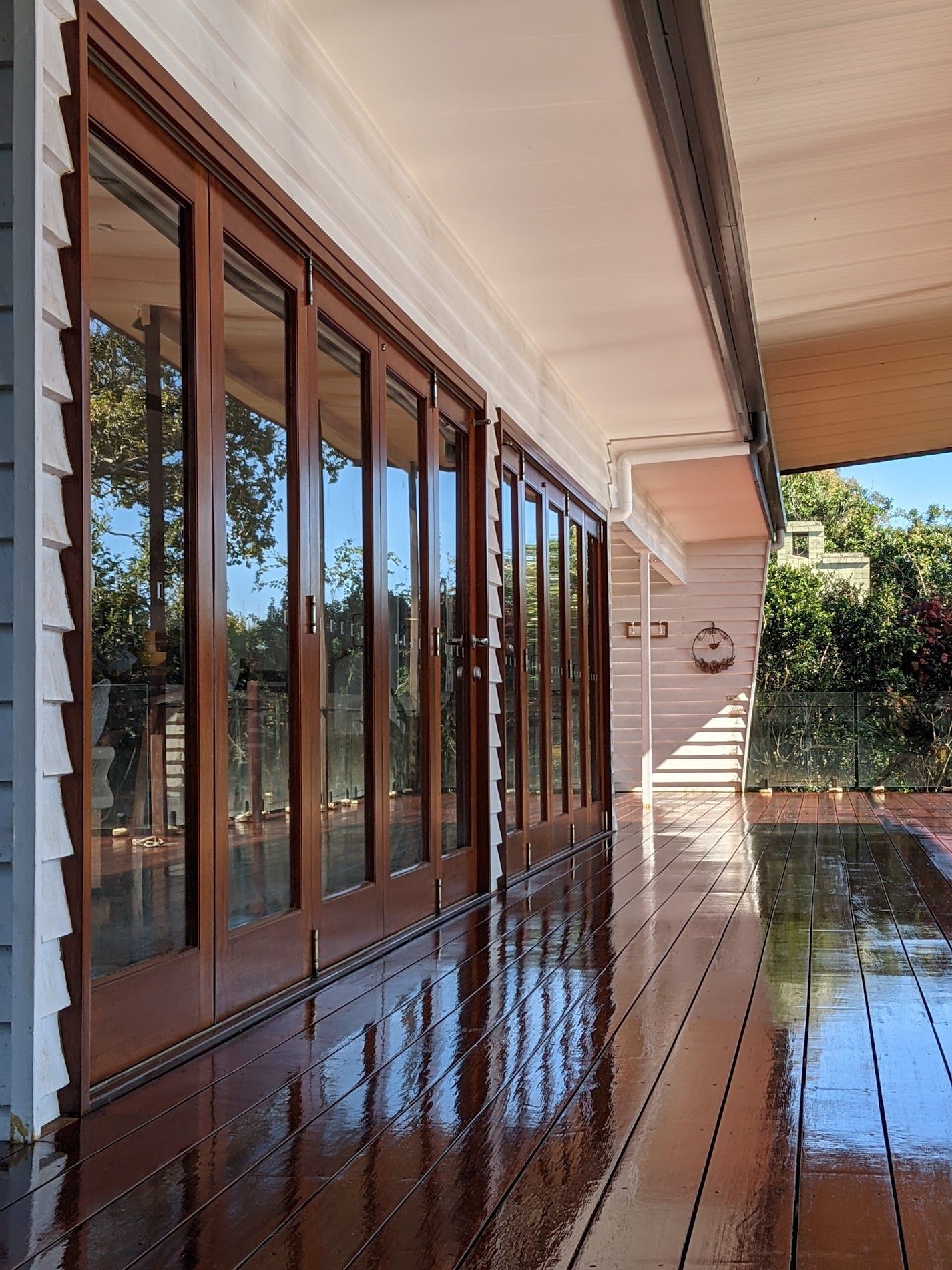Painting Timber Windows
How to get great results
When it comes to painting timber windows with an existing coating in bad condition, there are several important steps that should be taken to ensure that the new paint adheres properly and the finished result looks great.
Here are the key steps you should follow:
- Remove the old paint: The first step is to remove the old paint from the timber window frame. You can do this by using a paint scraper, sandpaper, or a heat gun. Depending on the state of the existing paint, you may need to use a combination of these methods. Be sure to wear protective gear, such as a dust mask and gloves, when removing the old paint.
- Clean the surface: Once the old paint is removed, you should clean the surface thoroughly to remove any dirt, dust, or debris. You can use a damp cloth or sponge to wipe down the window frame, or a pressure washer if you have one available.
- Repair any damage: Check the window frame for any damage such as cracks or holes. Fill any such damages with an appropriate wood filler, and allow it to dry completely before moving on to the next step.
- Sand the surface: After the repairs have been made, sand the surface of the window frame to create a smooth and even surface. Use sandpaper with a fine grit to avoid creating scratches that can be visible under the new paint.
- Apply primer: Before applying the final coat of paint, apply a good quality primer to the window frame. This will help to seal the surface and provide a good base for the paint to adhere to. You should follow the manufacturer's instructions for the recommended drying time before moving on to the next step.
- Apply top coat: Once the primer has dried, you can apply the final coat of paint. Choose a high-quality paint that is designed for use on timber surfaces, and follow the manufacturer's instructions for application and drying time.
- Maintain the new finish: After the paint has dried, you should maintain the new finish by regularly cleaning the window frames and checking for any signs of damage or wear. This will help to extend the life of the new coating and keep your windows looking great for years to come.
Overall, painting timber windows with an existing coating in bad condition can be a challenging task, but by following these steps, you can ensure a great result that will last for many years.
what is best to use for step 2 to clean the surface:
For cleaning the surface of timber windows after removing the old paint, it is best to use a mild detergent or cleaner and a damp cloth or sponge. Avoid using harsh chemicals or abrasive cleaners as they can damage the wood surface and make it more difficult for the new paint to adhere properly. A solution of warm water and a small amount of dish soap or a dedicated wood cleaner can be effective for removing dirt, dust, and other debris from the surface. Be sure to rinse the surface thoroughly with clean water after cleaning and allow it to dry completely before moving on to the next step.

Nice & Smooth Painting
Nice & Smooth Painting are a full insured professional painting company in the Sunshine Coast. Servicing all Sunshine Coast towns from Noosa and Buderim, to Maroochydore, offering a 5 year warranty certificate for complete peace of mind.
Contact Us
If quality is important, then talk to us today. We can help you with any size project - from touch-ups and single rooms, to entire houses.
Phone: 04 9799 6437
Email: Email Nice & Smooth Painting
Address:
17 Cooba Place, Noosaville, 4566, QLD
Hours: Mon - Sun, 07:00 - 22:00
Noosa web design by Phancybox

